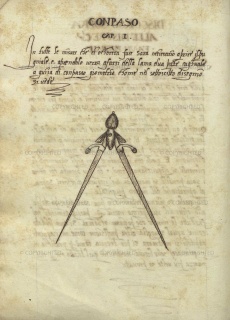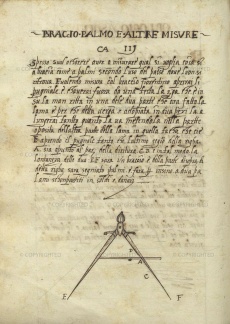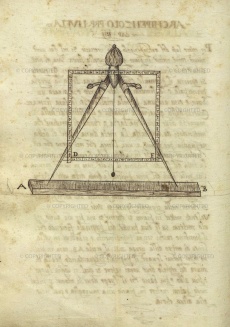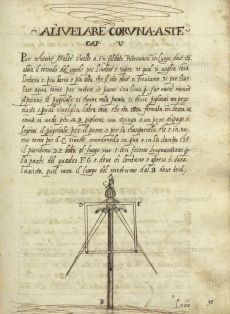Dagger
From Inventions
m (moved Military compass (dagger) to Dagger) |
Current revision as of 11:49, 26 July 2010
Name adopted by the inventor due to the resemblance of this compass to the well-known weapon.
Contents |
Inventor
Anonimo ingegnere mediceo
Historic Period
XVI secolo
Description
Described in a manuscript belonging to Bartolomeo Ammannati, the dagger has a blade made of two halves that open like a compass. This instrument served to read the hour (marked on the blades), to take measurements in palms, braccia, and other units by means of a ruler with proportional divisions which, applied to various points on the dagger, fixes its aperture depending on the unit of measurement employed. With this ruler and a square, mounted together on the dagger to form a graduated square, the dagger becomes an archipendolo, a level for measuring verticals and scarp-gradients, a gunner's quadrant (to aim guns and measure calibers) as well as an instrument for measuring distances, heights and depths. Lastly, with a 360° goniometric circle (eight 45° sectors) mounted at the hinge point, the dagger serves as compass to measure the dimensions of fortresses and draw their plan.
Bibliographical Resources
Anonimo, Discorso sopra alle misure che fa un pugnale, ms., sec. XVI, Firenze, Biblioteca Riccardiana, Edizione Rare 120, cc. 95-114.
Fossi, Mazzino, a cura di, Bartolomeo Ammannati. La città: appunti per un trattato, Officina, Roma, 1970, pp. 238-479.
Existing Instruments
Firenze, Florence, Museo Galileo. Institute and Museum of the History of Science, Inv. 1277
Images
Author of the entry: Filippo Camerota






